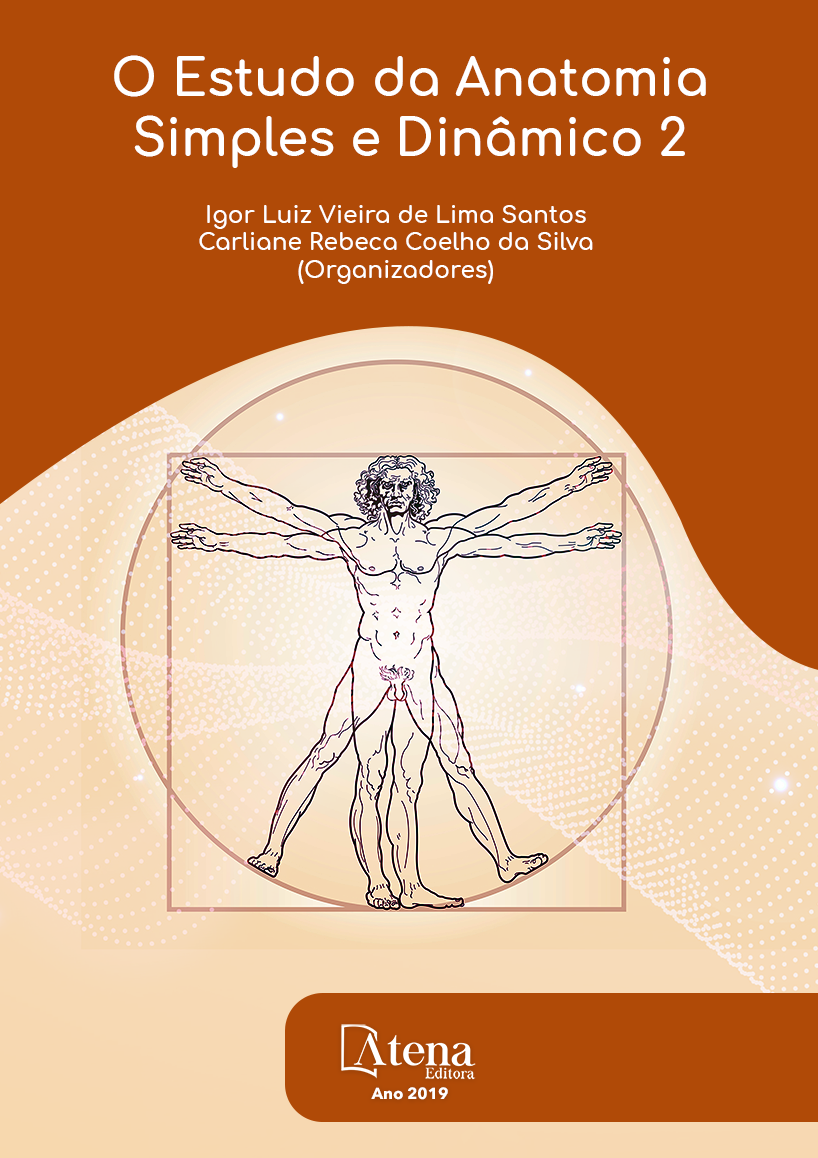
Estudo do forame magno e sua correlação com os índices craniométricos
Introdução: Existem indícios
de variações no formato craniano entre
populações e etnias distintas, sendo utilizados
padrões numéricos de medidas craniométricas
para caracterizá-los. Há grande enfoque no
uso do índice cefálico (IC), correlacionando a
braquicefalia com deformidades que acometem
o forame magno, como a invaginação basilar.
Entretanto, o IC analisa apenas o comprimento
e a largura do crânio, desprezando a altura, a
qual pode estar relacionada às alterações que
acontecem na base do crânio. As medidas que
incluem a altura máxima do crânio e avaliam as
dimensões e os tipos de crânio, são o índice
transverso vertical (ITV) e o índice de perfil (IP).
Metodologia: Foram utilizados 33 exemplares
de crânio seco do laboratório de anatomia da
Universidade Federal da Paraíba para analisar
os seguintes índices craniométricos: índice
do forame magno, índice cefálico, índice de
perfil e índice transverso vertical. Resultados:
Não foi observada diferença estatisticamente
significante quando comparados o índice do
forame magno com o IC (0,31); (r=0,19), IP
(0,36); (r=0,17), e ITV (0,88); (r=0,03). Quando
comparados os índices cranianos entre si, foi
observada uma diferença estatística entre o
IC e o ITV (p=0,001); (r=-0,68) e entre o ITV
e o IP (p=0,001); (r=0,86), embora não se
tenha encontrado tal diferença entre o IC e o
IP (p=0,23); (r=-0,21). Conclusão: Identificouse
correlação fraca e positiva entre o índice do
forame magno e o IC (r=0,19), IP (r=0,17) e ITV
(r=0,03), em ordem decrescente de intensidade.
Estudo do forame magno e sua correlação com os índices craniométricos
-
DOI: 10.22533/at.ed.33119250915
-
Palavras-chave: Craniometria. Forame magno. Índice cefálico. Índice transverso vertical. Índice de perfil.
-
Keywords: Craniometry. Foramen Magnum. Cranial index. Transverse vertical index. Vertial index.
-
Abstract:
Introduction: There are indications about the existence of variations on
cranial shape of different human populations and distinct ethnicities, using statistical
patterns of craniometric measurements to characterize them. There is a great focus
on the use of cranial index (CI), correlating brachycephaly with deformities that affect
the foramen magnum, such as basilar invagination. However, the CI analyzes only the
length and width of the skull, not using the height, which may mean that anomalies
occurring at the base of the skull could be related with the height of it. Measurements
that include the maximum height of the skull and estimates the dimensions and types
of skull are the transverse vertical index (TVI) and the vertial index (VI). Method: 33
specimens of dry skull were used from the anatomy laboratory of the Federal University
of Paraíba to analyze the following craniometric indexes: foramen magnum index, cranial
index, vertial index and transverse vertical index. Results: No statistically significant
difference was observed when the foramen magnum index and CI were compared
(0.31); (r = 0.19), VI (0.36); (r = 0.17), and TVI (0.88); (r = 0.03). When comparing the
craniometric indexes, a statistical difference was observed between the CI and the TVI
(p = 0.001); (r = -0.68) and between TVI and VI (p = 0.001); (r = 0.86), although no
difference was found between the CI and VI (p = 0.23); (r = -0.21). Conclusion: We
found a weak and positive correlation between the foramen magnum index and the CI
(r = 0.19), VI (r = 0.17) and TVI (r = 0.03), in descending order of intensity.
-
Número de páginas: 15
- Áquila Matos Soares
- Artur Guilherme Holanda Lima
- Edvaldo Pereira da Silva Júnior
- Weverton Jediael Rodrigues de Vasconcelos
- Monique Danyelle Emiliano Batista Paiva
- Rodrigo Ramos Rodrigues


